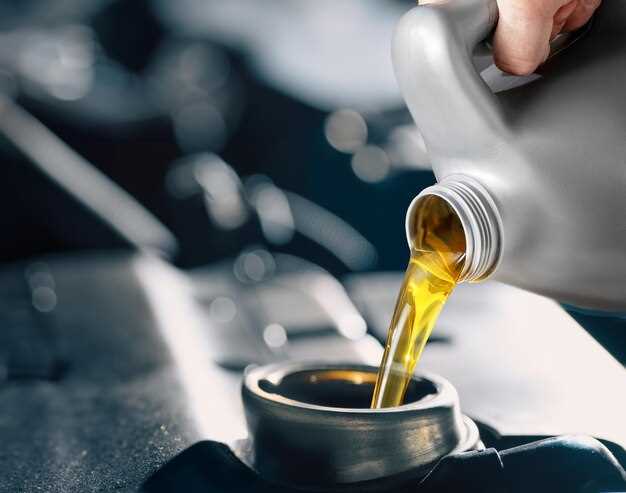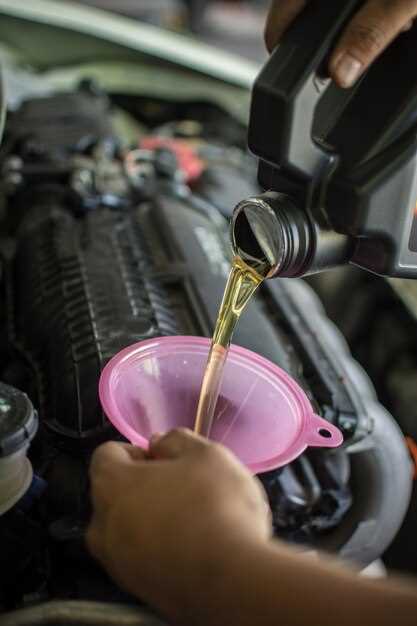
For enthusiasts of exotic cars, maintaining optimal performance is a priority, and one often overlooked aspect is the health of the brake system. Brake fluid serves as the lifeblood of this critical system, and understanding the importance of a brake fluid flush is essential for preserving the integrity and performance of these high-performance vehicles.
Over time, brake fluid can absorb moisture from the environment, leading to a decrease in its boiling point and compromising its effectiveness. This is particularly concerning for exotic cars that are designed for high-speed maneuverability and precise stopping power. Regular bleeding of the brake system ensures that old fluid is replaced with fresh, high-quality fluid, which optimally supports the hydraulic mechanisms responsible for braking.
Neglecting to flush the brake fluid can result in degraded performance, increased risk of brake failure, and even jeopardizing safety at high speeds. Ultimately, understanding the critical role of brake fluid maintenance, including timely flushing and bleeding procedures, is vital for any exotic car owner who demands peak performance and reliability from their vehicle.
Understanding the Role of Brake Fluid in Performance Cars
Brake fluid is a critical component in the braking system of performance cars, where precision and responsiveness are paramount. It serves as the medium through which force from the brake pedal is transmitted to the brake calipers, engaging the brakes and ultimately slowing down or stopping the vehicle. The effectiveness of a performance vehicle’s braking system relies heavily on the quality and condition of its brake fluid.
One of the most important properties of brake fluid is its ability to withstand high temperatures without boiling. Performance cars often experience high brake temperatures due to aggressive driving, which can cause standard brake fluids to vaporize, leading to brake fade. This condition results in a spongy brake pedal feel and diminished braking effectiveness, compromising safety and performance.
Regular brake fluid flushing is essential to maintain optimal performance. Over time, brake fluid can absorb moisture from the air, which lowers its boiling point and can lead to corrosion within the braking system. Bleeding the brakes removes old fluid and any air bubbles that may have entered the system, ensuring that the brake pedal remains firm and responsive under extreme conditions.
Moreover, high-performance brake fluids are specifically engineered to provide enhanced performance characteristics, such as better viscosity at varying temperatures and improved resistance to moisture. Using the right type of brake fluid is essential for achieving the best possible braking performance in exotic cars, as it directly affects the efficiency of the entire braking system.
Signs Indicating Your Brake Fluid Needs Flushing
Maintaining optimal brake performance in exotic cars is crucial for safety and handling. One of the most overlooked aspects is the condition of brake fluid. Here are key signs that indicate your brake fluid may need flushing:
- Dark or Cloudy Fluid: Fresh brake fluid is typically clear or slightly yellow. If the fluid appears dark or murky, this is a sign of contamination and moisture absorption, indicating it’s time for a flush.
- Spongy Brake Pedal: If you notice that the brake pedal feels spongy or sinks to the floor, it could be due to air trapped in the brake lines or deteriorated fluid. Bleeding the brakes can determine if a flush is necessary.
- Corrosion Around Brake Components: Visible rust or corrosion around brake lines, calipers, or components may suggest that the brake fluid has absorbed moisture, compromising its effectiveness.
- Increased Stopping Distance: If your exotic car takes longer to stop, this could indicate a problem with the braking system, including degraded brake fluid needing replacement.
- Frequent Brake Fluid Top-Offs: If you frequently have to add brake fluid, it may signal a leak or that the fluid is breaking down faster than normal, necessitating a flush.
Regular inspections and acknowledging these signs can enhance your exotic car’s performance and safety. Prioritize thorough checks and timely fluid changes to maintain peak braking efficiency.
Step-by-Step Guide to Bleeding Brakes in Exotic Vehicles
Bleeding the brakes in exotic vehicles is a critical maintenance task that ensures optimal performance and safety. This guide outlines the essential steps to properly bleed the brakes and maintain effective fluid levels.
Step 1: Gather Necessary Tools
Before starting, ensure you have the required tools: a brake bleeder kit, a wrench, clean brake fluid specific to your vehicle, and a container to catch old fluid.
Step 2: Prepare the Vehicle
Park the exotic car on a flat surface and engage the parking brake. It’s vital to ensure the vehicle won’t move during the bleeding process. Remove any wheel covers and loosen the lug nuts slightly, if necessary.
Step 3: Locate Brake Bleeder Valves
Brake bleeder valves are typically located near the brake calipers. Consult the vehicle’s manual to identify their exact location and ensure accessibility.
Step 4: Check Fluid Level
Open the brake fluid reservoir and check the fluid level. Top it off with new brake fluid to prevent air from entering the system during the bleeding process.
Step 5: Begin Bleeding Process
Start with the wheel furthest from the master cylinder, usually the rear passenger side. Attach the brake bleeder kit to the bleeder valve. Have a helper press the brake pedal slowly while you loosen the valve with a wrench. Fluid and air will escape; tighten the valve when the pedal is pressed down. Instruct your helper to release the pedal only after the valve is tightened.
Step 6: Repeat for Each Wheel
Move sequentially to other wheels: rear driver side, front passenger side, and finally front driver side. Continuously monitor the brake fluid level in the reservoir; refill as needed to maintain fluid level above the minimum mark.
Step 7: Final Check for Air Bubbles
After all wheels have been bled, recheck each brake line and valve for any remaining air bubbles. Repeat the bleeding procedure if necessary until only clear fluid flows without bubbles.
Step 8: Test the Brakes
Once the bleeding process is complete, perform a test drive in a safe area. Check for proper brake function before driving under normal conditions. If the brakes feel spongy or unresponsive, repeat the bleeding process.
Following this step-by-step guide will help maintain the efficiency of your exotic vehicle’s brakes, ensuring safety and performance on the road.
Choosing the Right Brake Fluid for Optimal Performance
The selection of brake fluid is crucial for maintaining optimal performance in exotic cars. Brake fluid acts as a hydraulic medium that transfers force from the brake pedal to the brake components, and the right type can significantly enhance braking efficiency and responsiveness.
There are several types of brake fluids, primarily categorized into two groups: glycol-based and silicone-based fluids. Glycol-based fluids, such as DOT 3, DOT 4, and DOT 5.1, are commonly used due to their effective moisture absorption properties. They are essential in environments where humidity is a concern, preventing brake fade by ensuring consistent performance during demanding driving conditions.
Conversely, silicone-based brake fluids, like DOT 5, do not absorb moisture, making them suitable for vehicles that may not be used frequently. However, compatibility must be considered, as silicone fluids should never be mixed with glycol-based fluids. For exotic cars that often undergo high-performance driving, selecting a fluid with a higher boiling point, such as DOT 4 or DOT 5.1, is ideal to prevent vapor lock.
Regular brake fluid bleeding is also essential to maintain brake performance. Over time, moisture can accumulate in the fluid, lowering the boiling point and leading to diminished braking capability. Bleeding the brakes ensures that old, contaminated fluid is replaced with fresh fluid, restoring optimal performance and safety.
Ultimately, choosing the right brake fluid for exotic cars involves understanding the intended usage and environmental factors while prioritizing high performance and reliability. Regular maintenance, including fluid changes and bleeding, will ensure the brakes operate at their best, providing a vital safety net and enhanced driving experience.
Impact of Moisture in Brake Fluid on Exotic Car Handling

Moisture infiltrating brake fluid can significantly compromise the performance and handling of exotic cars. Over time, brake fluid absorbs water from the atmosphere, leading to a decrease in its boiling point. For high-performance vehicles, the ability to withstand elevated temperatures is crucial during aggressive driving.
When brake fluid becomes contaminated with moisture, it can result in reduced braking efficiency. The presence of water leads to vapor formation at high temperatures, which can cause brake fade. This phenomenon occurs when the brakes become less effective, ultimately affecting the handling and performance of the car.
Moreover, moisture can corrode internal components of the braking system. This corrosion can lead to brake fluid leaks and impaired hydraulic pressure, further diminishing the responsiveness of the brakes. In exotic cars, where precision handling and quick response times are key, any degradation in braking performance can have serious consequences for both safety and driving experience.
Regularly flushing and replacing brake fluid is essential for maintaining optimal braking performance in exotic vehicles. By ensuring that the brake fluid remains free from moisture, owners can protect the integrity of their braking systems. This, in turn, enhances overall handling, allowing for consistent and reliable performance even under demanding conditions.
In summary, the impact of moisture in brake fluid on exotic car handling is profound. It not only compromises braking efficiency but also jeopardizes the safety and performance of these high-end machines. Regular maintenance, including brake fluid flushes, is paramount to ensure that brakes function as intended, providing the driver with confidence and control.
Common Mistakes to Avoid During Brake Fluid Maintenance

Proper maintenance of brake fluid is crucial for the optimal performance of your exotic car. However, several common mistakes can undermine the effectiveness of this maintenance task. Understanding these pitfalls can help ensure that your brakes function correctly and safely.
| Mistake | Description | Consequence |
|---|---|---|
| Ignoring Fluid Type | Using the incorrect brake fluid type can lead to brake system damage. | Decreased braking performance and potential system failure. |
| Infrequent Fluid Replacement | Failing to flush the brake fluid at recommended intervals can allow moisture accumulation. | Corrosion of brake components and reduced effectiveness. |
| Poor Bleeding Technique | Not following proper bleeding procedures can leave air in the brake system. | Spongy brake feel and unreliable braking response. |
| Neglecting System Inspection | Overlooking the inspection of hoses and seals during fluid maintenance. | Possible leaks and impaired brake function leading to safety issues. |
| Forgetting to Check Fluid Level | Failing to monitor brake fluid levels during maintenance. | Inadequate pressure in the braking system, impairing brake performance. |
By being aware of these common mistakes and adhering to proper maintenance practices, you can ensure that your exotic car’s brakes remain in optimal condition, significantly contributing to overall vehicle performance and safety.
